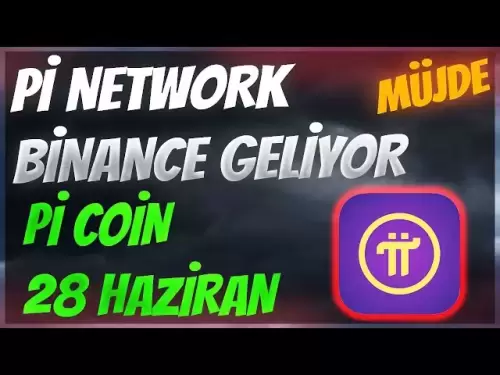 |
|
 |
|
 |
|
 |
|
 |
|
 |
|
 |
|
 |
|
 |
|
 |
|
 |
|
 |
|
 |
|
 |
|
 |
|
Cryptocurrency News Articles
What Are Smart Contracts and How Do They Work?
May 01, 2025 at 01:30 pm
A smart contract is an automated contract in which the terms are written directly into code. Smart contracts automatically enforce and execute the obligations of all participants

Smart contracts are small programs that run on a blockchain network and can automate and enforce the terms of an agreement between two or more parties. They are like regular contracts, but instead of being written in legal jargon and signed on paper, they are written in a programming language and stored on a blockchain.
The potential of smart contracts lies in their ability to be fully autonomous and self-executing. Once deployed on a blockchain network, they can operate indefinitely without any human intervention, and their actions are governed entirely by the code that defines them. This autonomy is a direct consequence of the decentralized and trustless nature of blockchain technology.
Each transaction on a blockchain network is broadcast to all nodes, which verify the transaction using cryptography and add it to a common ledger. This process ensures the immutability of the transactions and the blockchain network, rendering any attempt at alteration or corruption practically impossible.
To perform their functions, smart contracts can interact with external systems, such as oracles, which provide real-world data to the smart contract, or a payment gateway, which processes the transaction.
In essence, smart contracts are a new way of thinking about and executing contracts in a digital age. They offer several advantages over traditional contracts, such as increased efficiency, transparency, and security.
What Are the Advantages of Using Smart Contracts?
Smart contracts are a new technology with the potential to revolutionize the way we do business. They offer several advantages over traditional contracts, such as increased efficiency, transparency, and security.
Some of the major benefits of smart contracts include:
* Trust transparency
* Reduction in costs by removing intermediaries
* Increased speed of project execution
* Immutability through the security of blockchain
However, smart contracts also have some disadvantages. For example, they can be difficult to debug and maintain, and they may not be suitable for all types of contracts.
Overall, smart contracts are a promising new technology with the potential to change the way we live and work. As the technology continues to develop, we can expect to see even more innovative and useful applications of smart contracts.
Smart contracts are a product of the merging of blockchain technology with the legal and technological domains. They present new possibilities for automating and executing legal agreements on a decentralized network.
Each blockchain has its own programming language for creating smart contracts. For example, the Ethereum blockchain uses Solidity, while the Cardano blockchain uses Plutus. These languages are designed to be low-level and close to the machine, enabling the creation of complex and sophisticated smart contracts.
The process of creating a smart contract begins with defining the terms of the agreement in the chosen programming language. This stage is crucial as any error or ambiguity in the code can lead to unexpected behavior or legal issues.
Once the code is written, it is compiled and deployed to the blockchain network. This process involves broadcasting the contract code to all nodes on the network, which validate and store it in a common ledger.
After deployment, the smart contract begins executing its programmed logic, typically expressed in "If/Then" statements. For example, a smart contract for a mortgage can be programmed to release the title deed to the buyer when the final installment of the mortgage is paid in full.
Each action taken by a smart contract, such as receiving payment or transferring an asset, is recorded on the blockchain and can be viewed by anyone. This transparency is a key advantage of smart contracts, as it ensures that all parties are aware of the status of the contract at all times.
Moreover, the immutability of the blockchain guarantees that the terms of the contract cannot be modified after deployment. This characteristic is essential for ensuring the reliability and enforceability of smart contracts.
However, the immutability of smart contracts can also be a disadvantage. If an error or vulnerability is discovered in a deployed smart contract, it cannot be patched or updated. This limitation can lead to significant financial or legal consequences, especially in cases of maliciously coded smart contracts.
Despite these challenges, smart
Disclaimer:info@kdj.com
The information provided is not trading advice. kdj.com does not assume any responsibility for any investments made based on the information provided in this article. Cryptocurrencies are highly volatile and it is highly recommended that you invest with caution after thorough research!
If you believe that the content used on this website infringes your copyright, please contact us immediately (info@kdj.com) and we will delete it promptly.
-

-

- BitcoinOS and Starknet Are the First to Bring ZK-Proof Scaling to Bitcoin
- Jun 15, 2025 at 10:35 am
- BitcoinOS and Starknet aren't waiting around for the controversial OP_CAT hard fork to add new functionality to Bitcoin, with both projects devising innovative ways to scale Bitcoin using zero-knowledge (ZK) proofs right now.
-

-

-

-

-

- XRP Futures Ratio Hits 1-month Low as Shorts Outnumber Longs By a Considerable Margin
- Jun 15, 2025 at 10:20 am
- The ratio of long and short XRP futures positions has reached a 1-month low of 0.8622 on April 30, according to the latest data retrieved by Finbold from crypto intelligence platform CoinGlass.
-

-






























































